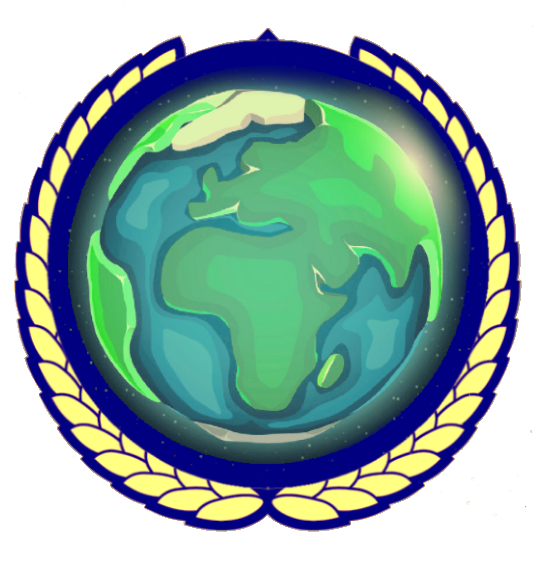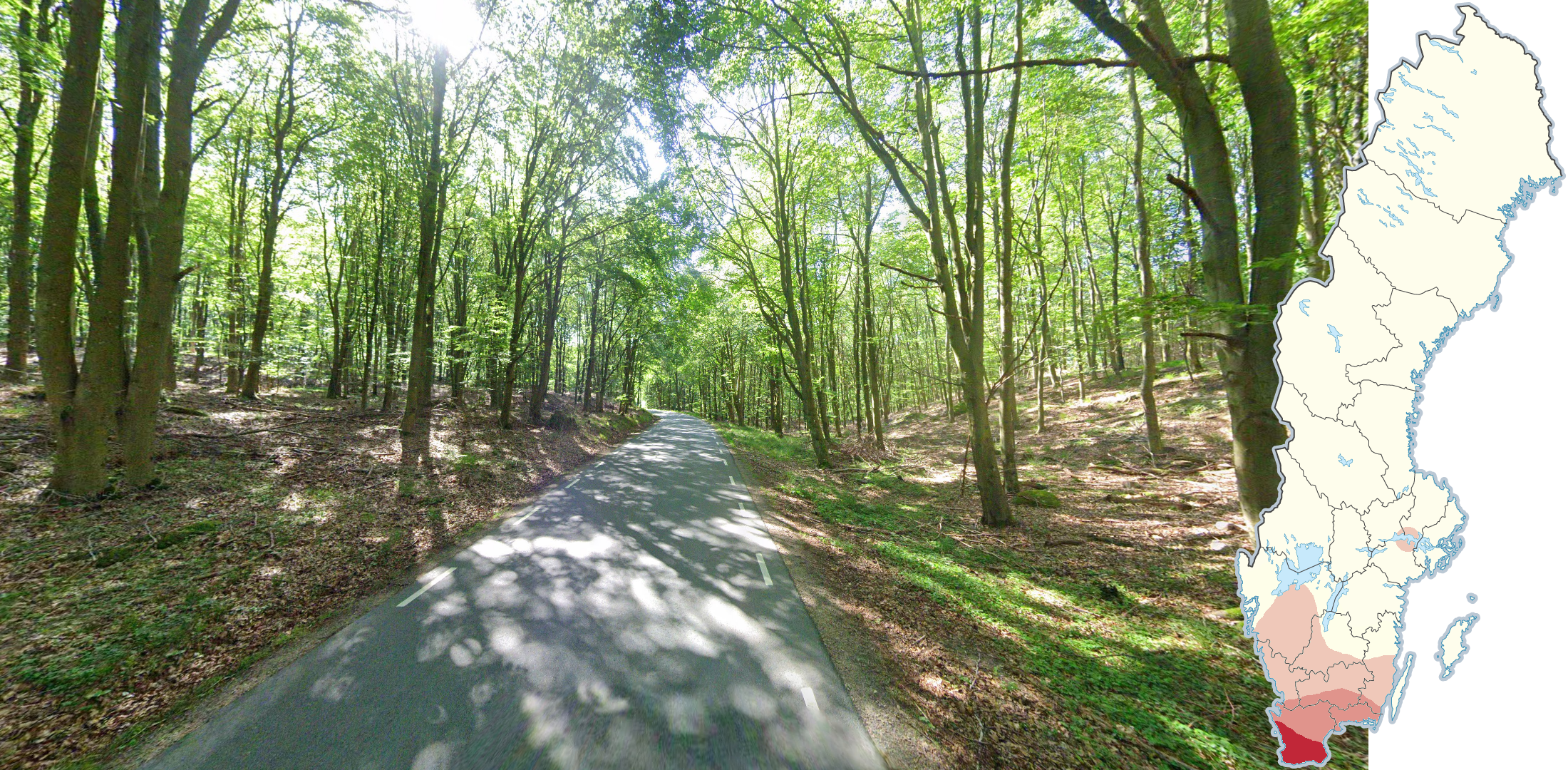
Sweden
Swedish is a North Germanic language that is closely related to Danish and Norwegian. The Swedish alphabet contains the special letters Å, Ä and Ö.
NOTE: The special letters found in Swedish can also be found in some of the other Northern Germanic languages:
Danish uses Å, but not Ä or Ö.
Norwegian uses Å, but not Ä or Ö.
Icelandic uses Ö, but not Å or Ä.
Finnish uses Ä and Ö. Å is also used, but is treated as Swedish. Finnish words are typically longer and often use double vowels, which are very rare in Swedish.
The outer road lines on highways look solid from a distance, but are typically divided into small sections with a unique pattern, which is different from the solid lines in Finland and Norway. Road lines in Denmark can have a similar pattern, however the individual sections should be rectangular.
Swedish bollards are black-and-white, typically with a grey reflector. Reflectors by intersections are commonly orange instead. They can be either wedge-shaped, round, or thin and curved.
Snow poles are typically orange, with a tall white reflector slightly above the middle of the pole. Some poles have a second, thinner reflector above the normal one.
NOTE: Finland and Norway both have similar orange snow poles. The reflector on Finnish poles is usually much thinner and very close to the top. Norwegian poles typically have either one or two slightly thinner reflectors, with one commonly being very close to the middle.
Swedish pedestrian signs have four stripes. There is notably a version featuring a female silhouette.
NOTE: Finnish and Danish pedestrian signs have five stripes. Norwegian pedestrian signs usually have four stripes, but can also have five.
Most directional signs are blue with a white font and border. A thin arrow shows the direction.
Yellow signs with a black font and red border are also common. Places showcased on yellow signs are typically very small and thus hard to find on a map.
NOTE: Norwegian directional signs are yellow or white, and the white arrow on Finnish signs is filled in.
Sweden is the only country in Europe whose chevrons have yellow arrows on a blue background.
NOTE: While very rare, yellow on blue chevrons also exist in Luxembourg.
On smaller roads, it is common to see these blue signs with a large white M.
NOTE: Similar signs can be found in Norway, however the font is distinctly different. The middle point of the M extends to the bottom of the letter. There are no similar signs in Finland.
Signposts will often have striped markings. Blue and white, and red and yellow are the two most common, but you can also find other colours such as blue and red or white and red.
NOTE: Blue and white markings can be found in several other countries, such as Finland and Estonia, however the other colour schemes are essentially unique to Sweden.
On top of having red and yellow road signs and signpost markings, Sweden often has a lot of road infrastructure, such as road work signs and road blocks, painted red and yellow. You can even come across red and yellow chevrons.
Swedish street names most commonly use the suffixes “vägen” and “gatan”. They are often shortened into “v” and “g” respectively on street signs. Street names can also use “väg” or “gata” as a separate word in a street name. Additionally, the suffix “gränd” can be found near city centres.
NOTE: Norway uses veien or vei, gate or gaten, and gata attached to the rest of the street name, rather than as a separate word. Denmark uses vej and gade.
Houses in the Swedish countryside are most commonly wooden and often painted with a distinct dark red paint, which is almost exclusively found in Sweden, Norway and Finland.
Urban architecture is usually modern and made of concrete and bricks, while suburban buildings are commonly freestanding single family houses built of either wood or brick.
This type of traditional wooden fence, made out of thin spaced out vertical tree trunks and slightly diagonal trunks stacked on top of each other, is commonly found in Sweden.
NOTE: Similar fences can be found in other Nordic countries, particularly in Norway near the Swedish border, but are significantly less common.
Step 2 – Regional clues
Rock walls are mainly found in the south, with the largest concentration being in several coastal areas, on Öland, and on the southern and northern tips of Gotland.
Beware that rock walls around churches and cemeteries are common further north.
It is very common to see exposed, often somewhat round, rocks on the Swedish west coast. They will often have lower vegetation, such as small bushes, growing on them.
NOTE: Exposed rocks around Stockholm are also fairly common, however these typically look sharper than rocks on the west coast, and commonly have thick moss growing on them.
In Skåne you will find the most open agricultural landscape in Sweden. It is the only region where, rather than a dense forest in the distance, you can get only a few small patches of trees strewn across the fields. On top of that, crops are often more diverse than the cereal crops, which are typical for the rest of Sweden.
The agricultural landscape of Västergötland and Östergötland is mostly flat, similarly to the landscape around lake Mälaren. The two most consistent differences is that this landscape is more open and has lots of wind turbines. While you can almost always see a forest in the distance, it will typically be much further away than around Mälaren.
On the west coast, and particularly in Halland, you will see a lot of flat agricultural fields with small, round, forested hills in the distance. Generally, the hills get larger and the fields get smaller further north. The area also has more precipitation than most of the country, and as such it typically looks very lush.
In most of Jämtland County, particularly around lake Storsjön, you can find large farmlands, commonly situated in the middle of wide, often somewhat steep hills, which is uncommon in the rest of the country, where most farmlands will be either on flat ground or in valleys. The fields are generally not cultivated and will mostly consist of ordinary grass.
Red dirt roads are mainly found in Dalarna, but can also be found in and around Kalmar county, the border between inland Norrbotten and Västerbotten, and rarely between lakes Vänern and Vättern.
Dirt roads which have a deep grey colour and are aligned with low, green grassy vegetation on either side are commonly found in the northern half of Jämtland. This is mostly found in Generation 4 summer and Generation 3 fall coverage.
Öland is an extremely flat island with a somewhat barren south half with many small bushes, while the north is typically slightly lusher with fewer, but larger bushes and some trees. The island also contains a very large number of small rock walls.
Houses in Skåne commonly have either a white stone, or a red brick wall with a coloured wooden triangle beneath the roof on the sides. Similar houses with other materials (such as grey brick) for the walls can be found elsewhere in the southern half of the country.
Grey diamond-tiled roofs are mainly found in Skåne, Blekinge, Öland, and occasionally on Gotland.
NOTE: Gotland and Öland are normally more easily recognised from landscape alone. Houses in western and southern Skåne typically use a lot of stone and bricks, while houses in northeastern Skåne and Blekinge are mostly made of red painted wood.
Central Dalarna has a strong tradition of wooden craftsmanship, and as a result much of the architecture has a unique, picturesque look to it. Most commonly, you may find red timbered houses, portals made of logs, and so-called härbren which have a very distinct design.
NOTE: Similar buildings can be found elsewhere in the country, but it is by far most common in central Dalarna.
Along the northern coast you will commonly encounter agricultural sheds which are either octagonal or rectangular, with the walls noticeably leaning outwards. They will typically be made out of red-painted logs.


























































